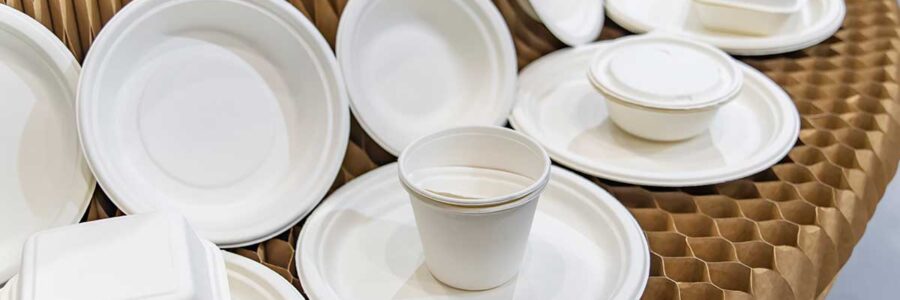When considering everyday health, we often focus on what’s in our food, but it’s also essential to consider what we serve it on. Styrofoam plates and cups, though common, pose a real threat due to their primary component: styrene. Styrene is a chemical known to disrupt hormonal balance, impair brain health, and potentially affect reproductive function. Here’s a deeper look at how Styrofoam products affect health and the benefits of switching to non-toxic alternatives.
What Makes Styrene Harmful?
Styrene, the chemical used to make Styrofoam, is classified as an endocrine disruptor, meaning it can interfere with the body’s hormonal systems. When food or beverages come in contact with Styrofoam, especially if they’re hot, styrene can leach from the material into what you’re consuming, introducing a range of health risks:[1]
- Hormonal Disruption: Styrene can mimic hormones in the body or interfere with their natural function, leading to imbalances that may affect reproductive health, thyroid function, and metabolic processes.
- Cognitive and Neurological Concerns: Chronic exposure to styrene has been linked to cognitive impairment. Studies indicate that styrene may affect memory, focus, and mood stability, potentially creating challenges for brain health.[1]
- Cellular Damage and Oxidative Stress: Styrene exposure has also been linked to increased oxidative stress on a cellular level. This can lead to cellular degradation, DNA damage, and accelerated aging, all compromising long-term wellness.
Why Heat Accelerates Styrene Leaching
Styrofoam’s risks increase significantly when it’s exposed to heat, as the higher temperatures speed up the release of styrene into food and drinks. For example, placing hot soup in a Styrofoam bowl or pouring hot coffee into a Styrofoam cup can lead to faster chemical leaching, making it easy to consume styrene unknowingly. Repeated exposure to these leached chemicals can accumulate in the body over time, creating chronic exposure that is especially concerning for brain, hormonal, and reproductive health.[2]
Safer Alternatives for Everyday Use
Fortunately, avoiding styrene is entirely possible with several safer options that are easy to integrate into daily life:
- Glass Plates and Bowls: Glass is one of the safest food storage and serving materials. It’s heat-resistant, doesn’t react with acidic foods, and is easy to clean. For those committed to avoiding toxins, glass is ideal for hot and cold foods.
- Stainless Steel Plates and Cups: Stainless steel offers durability and safety, making it an excellent alternative to Styrofoam for outdoor dining or packed meals. This material is also resistant to breakage, making it a practical choice for families or events.
- Uncoated Paper Plates: When convenience is key, uncoated paper plates are a safer disposable option. Free from plastic or chemical coatings, these plates avoid the leaching risks of Styrofoam.
- Bamboo or Palm Leaf Plates: These natural, biodegradable options are ideal for larger gatherings. They provide the convenience of disposability without the chemical risks of Styrofoam.
Protecting Your Health Through Non-Toxic Choices
Styrofoam may be convenient, but the health risks associated with styrene leaching make it worth avoiding. Opting for non-toxic alternatives can protect your hormone health, support cognitive function, and reduce the risk of cellular stress. Making simple changes, such as switching to glass, stainless steel, or biodegradable plates, can support your long-term wellness and provide peace of mind about what’s going into your body, food, and drinks.
References:
- HEALTH EFFECTS.” Toxicological Profile for Styrene, Agency for Toxic Substances and Disease Registry (US), 2010.
- Deng, Jingyu, et al. “Microplastics Released from Food Containers Can Suppress Lysosomal Activity in Mouse Macrophages.” Journal of Hazardous Materials, vol. 435, Apr. 2022, p. 128980.


